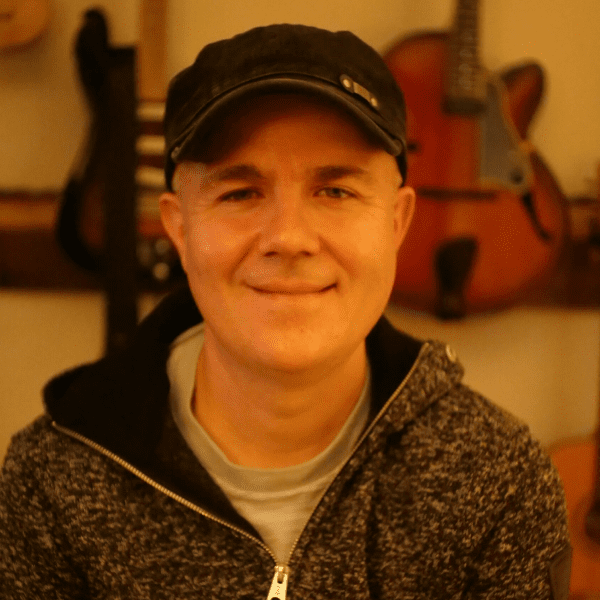
The Following is a list of broad stroke concepts. There are many ways to practice scales and integrate them into your playing and writing. The way you practice them will drive what you want to get from them. What you want to get out of them corresponds to why you want to practice them to begin with. Let’s Start with the why…
Why?
- Improv and composition possibilities
- Technique development (both hands)
- Fretboard awareness
- Rhythm & time feel development
- Ear training of tone colour and intervals
- Harmony (Chords) understanding
- Therapeutic when played repetitively
- Brain speed
How?
Write Them. Understand Them. Memorize them.
- ascending/descending all twelve keys
- Interval structure
- Tonic & secondary chords
- Characteristic notes
What Scales?
- 7 modes of Major
- 7 modes of Harmonic Minor
- 7 modes of Melodic Minor
- Whole Tone
- Whole Tone Pentatonic
- Symmetrical Diminished
- Min 7 Pentatonic
- Min 6 Pentatonic
- Majb6 Pentatonic
- Min7 b5 Pentatonic
- Harmonic Major
Fretboard Awareness:
Do each of the following ascending & descending
- Vertically on one string
- Horizontally: One octave across any 3 adjacent strings in position starting with any finger
- Two octaves across 6 strings in position starting with any finger
- Diagonally: One octave with any two adjacent strings +
Three octaves: link any 3 one octave shapes together starting with any finger
Technique:
- All down strokes
- All up strokes
- Down/up
- Up/down
- Alternative picking
- Fingerstyle (Paco De Lucia, Mateo Mancuso, Jeff beck)
- Legato
- Speed
Rhythm & Groove Feel:
Play the scale in question using:
- Whole notes
- Displaced whole notes
- Half notes
- Displaced half notes
- Quarter notes
- Displaced quarter notes
- Sixteenth notes
- Fragmented sixteenth groupings
- Triplet Half Notes
- Displaced Triplet Half Notes
- Triplet Quarter Notes
- Displaced Triplet Quarter Notes
- Triplet 8th notes
- Displaced Triplet 8th notes
- Triplet 16ths
- Displaced Triplet 16ths
Speed/Tempos:
- Ballad tempo (50-90bpm)
- Medium (95-115pm)
- Medium up (120 -165 bpm)
- Up (170 -195bpm)
- Burning ( 200+ bpm)
Time Feel:
- On beat
- Ahead of the beat
- Behind the beat
- Even
- Swing/shuffle
Melodic Shaping:
- Linear Up And Down
- Vertical using diatonic triads and 6th/7th chord arpeggios
- Melodic Cells
- Lines
- Chromatic Approaches
- Enclosures
- Patterns
Harmonic Content:
- Tonic & Secondary Chord Arpeggio in all inversions (one, two, and three octaves)
- Tonic & Secondary Chord Voicings in all inversions
- Intervals: 2nds, 3rds, 4ths, 5ths, 6ths, 7ths
- Double Stops: 2nds, 3rds, 4ths, 5ths, 6ths, 7ths
- Quartal Harmony
Life after scales?
Ok, that’s been an exhausting list. It’s a long view approach. What you want out of it now may be different than later on. You can always come back to it. You will always find new approaches and benefits the more you work on this stuff.
So now next steps. Even if you’ve done everything in the above list, it would be like developing perfect grammar, sentence structure, and spelling. What’s missing?
Conveying Ideas:
This is the point of learning any language. To communicate your ideas and responses to others, and to understand others’ responses and ideas. The exchange of ideas is what build relationships. Whether you’re talking to friends, family, loved ones, colleagues, clients, an audience, etc. The context in which the exchange of ideas happen.
Music can convey many emotions and thoughts: laughter, sorrow, joy, anger, resilience, longing, dancing, and grooving. All this to say, you have to start putting this stuff to work for you. I will broach this subject in more detail over time, but for right now, let’s talk about improvisation.
Improvisation is really one of the keys to getting a mastery on music concepts. To let it fly in real time and see what happens. Same with writing. You start playing, see what comes out and then put ideas together. Scales are the ultimate building blocks for melodic ideas.
As far as resources for shedding this stuff, I really can’t recommend enough the Real Book series. They have tunes in just about every style in a variety of eras:
- Pop
- Jazz
- Latin
- R&B
- Country
- Rock
- Dixie
- Dixie
Try improvising over different types of tunes with different chord sequences. This takes time, but if you keep coming back to it, you’ll find your ideas getting stronger each time.


